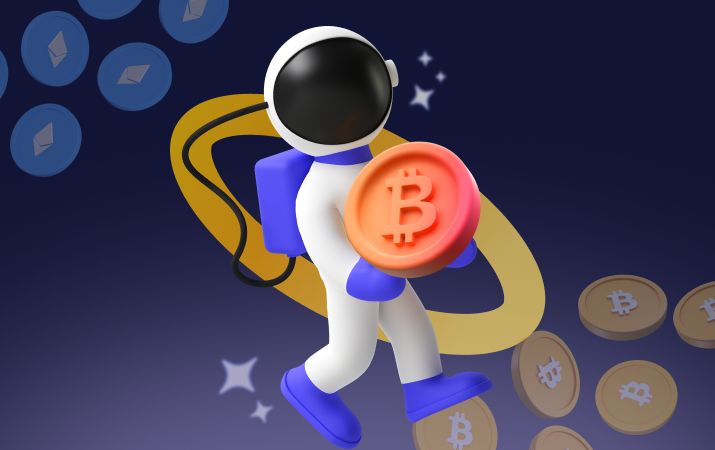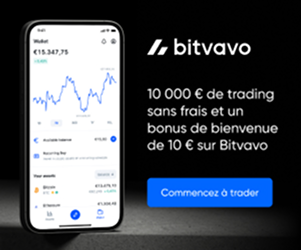Tokenomics is a key element in the fundamental research of a crypto project. It is an essential business model for assessing the prospects of a blockchain project, and crypto projects need to carefully design their business model to ensure long-term sustainable development.
Definition: what are tokenomics?
Tokenomics is the set of rules and mechanisms that govern the issuance, distribution and use of tokens in a decentralized system, such as a blockchain or a cryptoasset crowdfunding platform. Tokens can be used to represent digital assets, property rights, shares or votes, and can be traded on open markets.
Of course, crypto projects need to carefully design their business model to ensure long-term sustainable development.
Tokenomics: the business model
Rules around tokens are designed by blockchain projects to encourage or discourage various user actions. These rules are similar to those of central banks, which print money and implement monetary policies to encourage or discourage spending, borrowing, saving and money movements. But unlike fiat currencies, the rules of tokenomics are implemented via code and are transparent, predictable and difficult to modify.
For example, Bitcoin has a total programmed supply of 21 million BTC. Bitcoins are created and put into circulation by mining. In return, miners receive bitcoins as a reward when a block is mined, approximately one every 10 minutes. The Bitcoin business model is simple and ingenious. Everything is transparent and predictable.
Tokenomics: the different elements of a business model
Tokenomics refers to the economic structure of a cryptocurrency as conceived by its creators. There are various factors that are taken into account when examining a cryptocurrency's business model.
Supply and demand
Supply and demand are the main factors in tokenomics. There are two main critical indicators measuring the supply of a token.
The first is called maximum supply. It refers to the maximum number of tokens in existence. For example, Bitcoin has a maximum supply of 21 million BTC and Binance a maximum supply of 200 million BNB. There are tokens that do not have maximum bids, such as stablecoins like USDT, USD Coin (USDC) and Binance USD (BUSD), as these currencies are issued according to the reserves backing them. Dogecoin and Polkadot are two other cryptos with unlimited supply.
The second is supply in circulation. It refers to the number of tokens publicly available on the crypto market. These can be mined, destroyed or otherwise locked.
Token utility
Utility refers to what the token can be used for. For example, the MATIC includes the operation of the Polygon blockchain, the payment of transaction fees, including fee reduction.
There are many other use cases. Governance tokens allow the holder to vote on changes to a token's protocol. Stablecoins are designed to be used as currency. Financial tokens represent financial assets. Knowing the utility of a token can help determine its potential uses, which is essential to understanding how its value might evolve and the value of investing in it.
utility token
Distribution
In addition to utility, it's important to consider token distribution. Generally speaking, there are two ways of distributing tokens: a fair launch and a launch with pre-mining. A fair launch is when there is no early access to a token before it is issued and distributed to the public, such as BTC or DOGE. In fact, the first issue of a token during the start-up phase of a project is known as an ICO (initial coin offering). A portion of the tokens is allocated to the community, investors or any other fund-raising buyer. There are usually allocations for marketing or to remunerate miners too. It's all part of the project's tokenomics.
Destruction
Many crypto projects regularly destroy tokens, which is tantamount to permanently excluding them from circulation. Reducing the number of tokens in circulation increases their rarity and, indirectly, their price. Binance, for example, has already resorted to destroying its BNBs in order to reduce the total supply.
Thus, when the supply of a token is reduced, it is considered deflationary. Conversely, when the supply of a token continues to grow, it is considered inflationary.
The incentive mechanism
The incentive mechanism is at the heart of the economic model. It is a process that calls on participants to ensure long-term sustainability. For example, the BNB enables developers to deploy smart contacts for low transaction fees.
Many DeFi projects have used innovative incentive mechanisms to achieve rapid growth, such as The Sandbox, with its mini-games for winning SAND, the platform's native token.
As a crucial element of fundamental research into crypto projects, tokenomics plays a central role in assessing the long-term prospects of a blockchain or cryptoasset crowdfunding platform. To understand tokenomics in greater depth, it's essential to dive into the various elements of a business model.
Supply and demand, as the main factors, are measured by maximum supply and supply in circulation. For example, Bitcoin with a maximum supply of 21 million BTC and Binance with 200 million BNB illustrate the diversity of approaches. Some tokens, such as stablecoins, do not have a maximum offer, being issued according to the reserves backing them.
The utility of the token, defining its use cases, is a crucial element in anticipating its evolution and the interest of investing. Whether we're talking about governance tokens, stablecoins or financial tokens, understanding how they work is essential.
The distribution of tokens, whether fair or with pre-mining, influences the perception of the project. An ICO, for example, represents the first token issue during the start-up phase, allocating tokens to the community, investors and other stakeholders.
Token destruction, practiced by some crypto projects such as Binance, aims to permanently exclude tokens from circulation, thereby increasing their rarity and potentially their value. This practice can transform a token into a deflationary asset, in contrast to tokens whose supply is growing, considered inflationary.
Finally, the incentive mechanism at the heart of the business model calls on participants to ensure long-term sustainability. Examples such as BNB, offering reduced transaction fees to developers, or DeFi projects using innovative incentive mechanisms, illustrate how this process promotes rapid growth and active user participation. Understanding these elements is essential for assessing the viability and growth potential of a crypto project.







